International Heritage Centre blog
World Refugee Day
World Refugee Day
20 June 2014 is World Refugee Day and 16 – 22 June is UK Refugee Week which this year is dedicated to children and young people. Both events raise awareness of the plight of forcibly displaced people across the world and celebrate their achievements and contributions to society.The Salvation Army has a long history of social and evangelical outreach to refugees. It has worked both independently and in partnership with other organisations to provide systematic relief to children and adults displaced by environmental and political events. At the International Heritage Centre we hold a wealth of archival records (including photographs and oral histories) and publications relating to these activities.
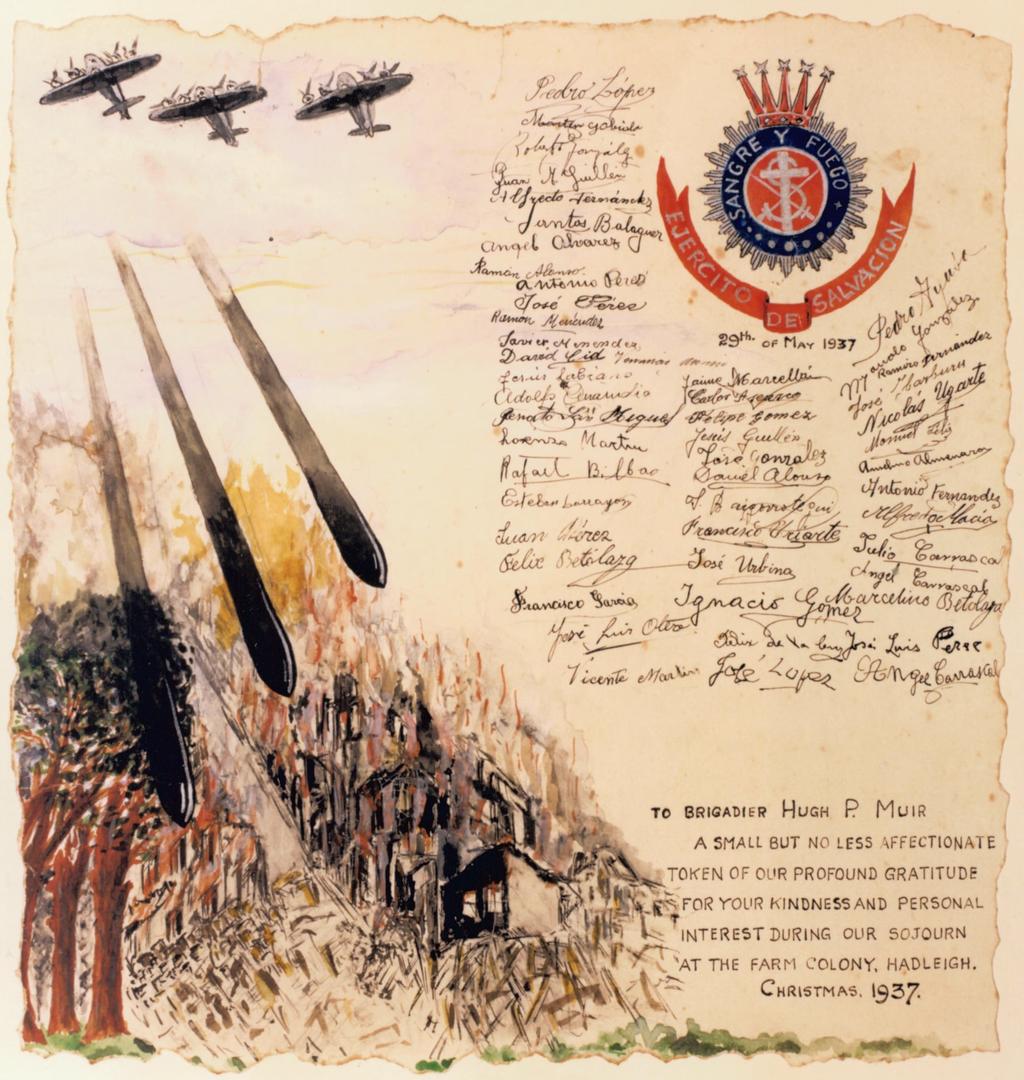
For instance, when in May 1937 the British government agreed to give temporary asylum to over 4,000 Basque refugee children affected by the Spanish civil war, The Salvation Army offered to care for 400 children. 67 boys were temporarily sent to stay at its Hadleigh Land Colony in Essex. The image above is of a painting later given to Hadleigh Salvation Army officer Brigadier Hugh Muir by these boys as a ‘token of our profound gratitude’. During the summer of 1937 The Salvation Army also provided large scale assistance to refugee Chinese citizens in Shanghai, Beijing and Tianjin. The image below is taken from The Salvation Army’s Chinese newspaper The Crusader and depicts relief activities in Shanghai following its attack by Japanese forces.
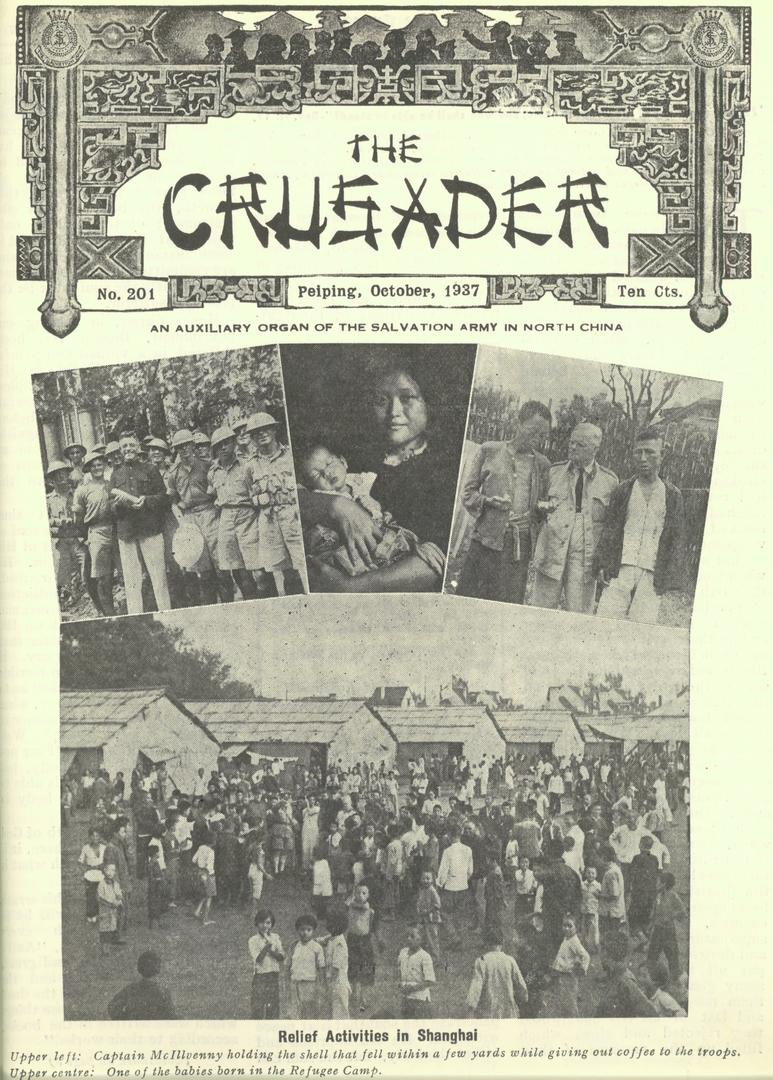
Within hours of the attack over 200,000 Chinese fled to Shanghai’s International Settlements for protection and an International Relief Committee was established. This Committee invited the Salvation Army’s officer Brigadier Bertie Morris, who had previously co-ordinated refugee work in North China, to manage one of the International Settlements’ refugee camps. Amongst our records of the North China Territory we hold Morris’ recollections of this time. Morris relates how he recruited refugees to ‘clean, cook, police and organise’ the camp community and ‘held evangelistic meetings daily, morning, noon and evening, with special services for converts.’ In total Morris oversaw the shelter of over 28,000 refugees in this camp and was widely praised for its management.
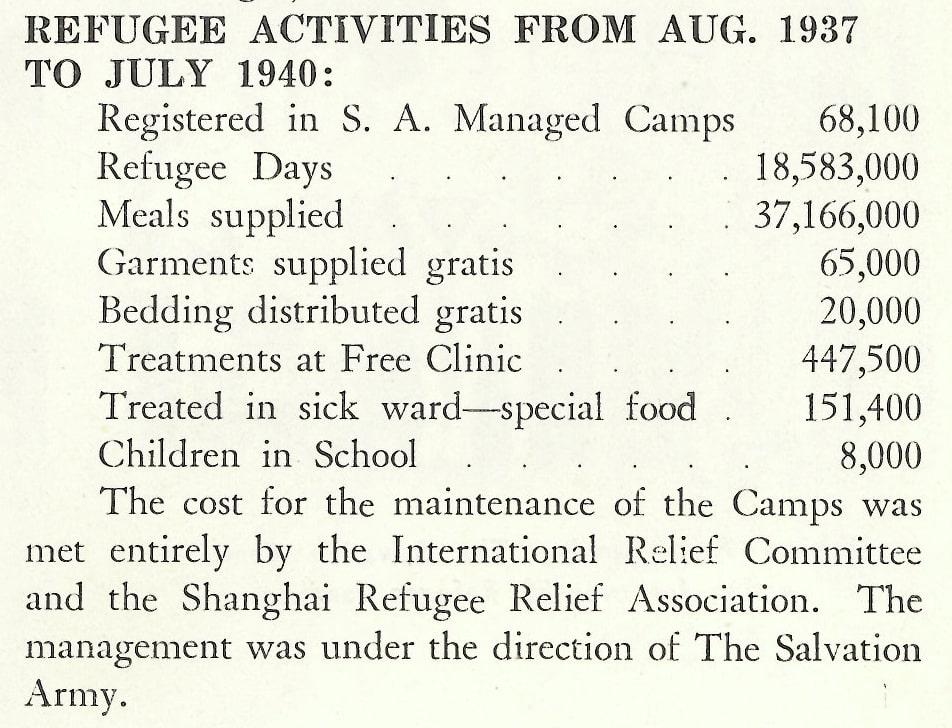
The Salvation Army continued to provide international assistance to displaced people after the end of world war two. It was one of 22 voluntary organisations in the Council of British Societies for Relief Abroad (CBSRA) which co-ordinated relief efforts in the liberated countries of Europe. We have substantial records relating to these activities in our collection of The Salvation Army’s Post-War Relief Department . The Department was particularly involved with supporting refugees and returning evacuees in Germany and advertised for active Christians to voluntarily assist this work. The image below (one of its German publications) reads ‘Let the blessed sunshine in!’
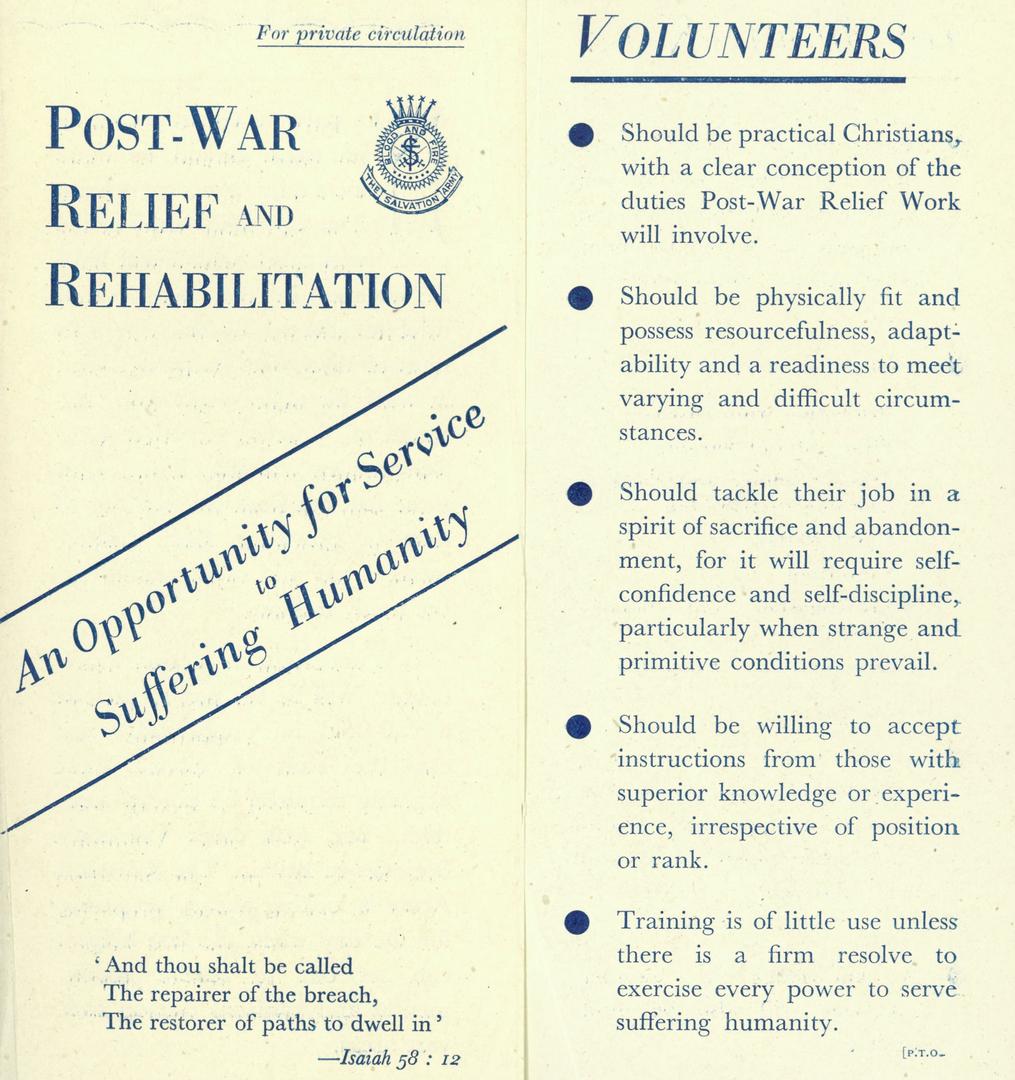
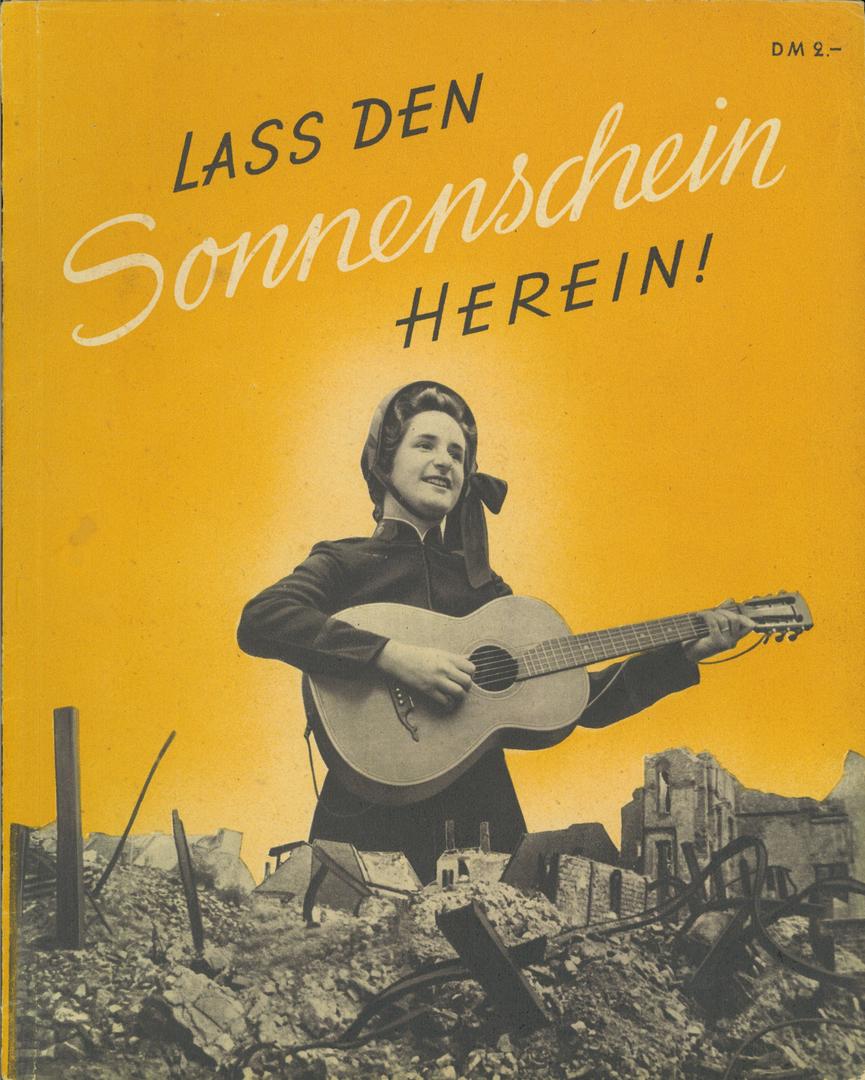
Again The Salvation Army was active in caring for children as a contribution to tackling post-war social problems. Establishing children’s homes was perceived as a positive opportunity ‘because it enables us to have the children for a long time, and so bring a loving and Gospel influence to bear upon their lives.’ The image below is of a former poison gas factory turned Home in Leese which was opened in June 1947 to accommodate ‘unwanted’ and ‘Refugee Illegitimate Children.’
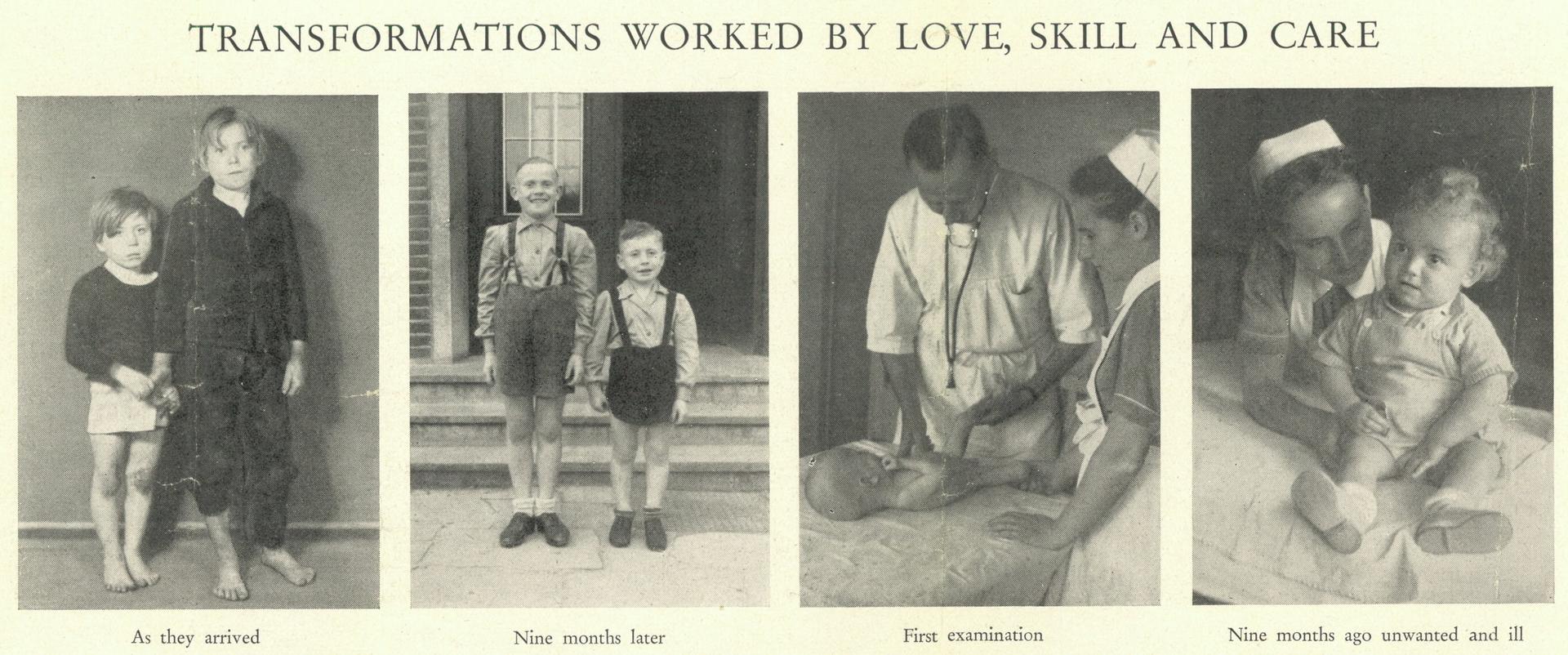
Since the latter half of the twentieth century Salvation Army work with refugees has become increasingly systematic and co-ordinated with its wider emergency services and development work. In 1979 The Salvation Army Refugee and Relief Operation (SARRO) was established in response to the Cambodian refugee crisis, during which the Salvation Army assisted international relief organisations with providing medical care and food distribution to over 35,000 refugees in the Thai Sa Kaeo camps.
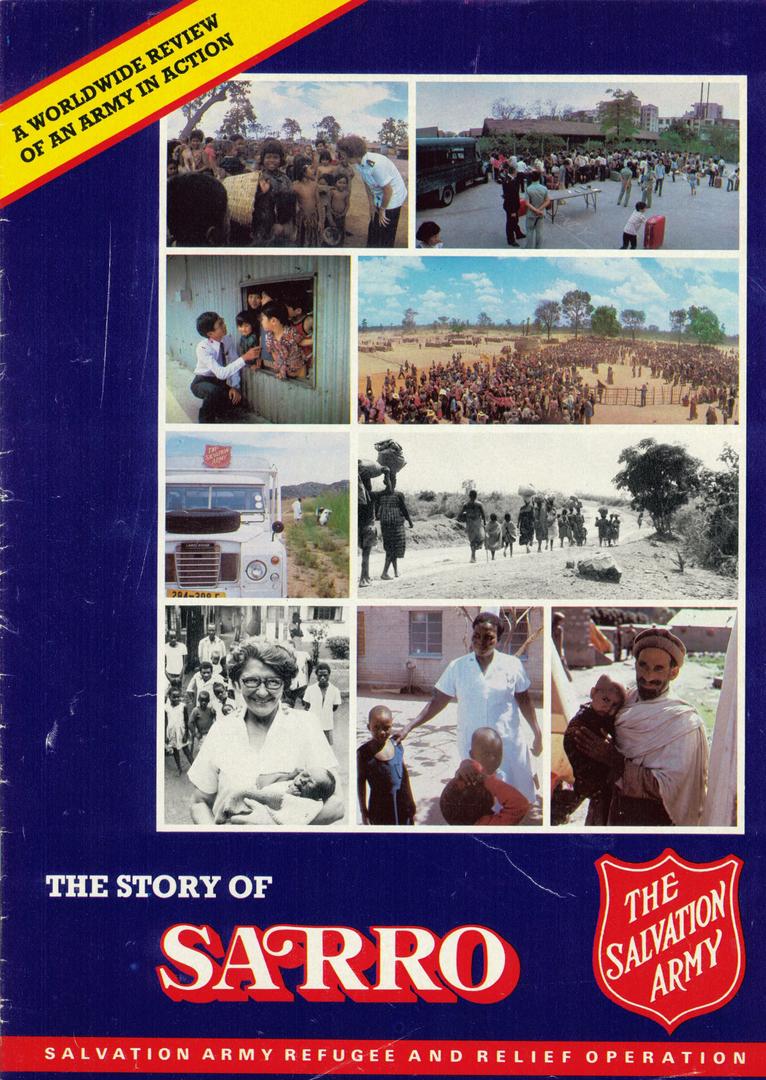
One of the objectives of SARRO was to recruit qualified volunteers and lay staff and to train Salvation Army officers in the skills needed to manage ‘disaster and development, relief and rehabilitation.’ Following on from its emergency relief to Rwandans during the genocide of the mid-1990s The Salvation Army’s International Headquarters now has a dedicated unit for Emergency and Refugee Services within its Development Services.As part of its long-term rehabilitation aims The Salvation Army also supports refugees in preparation for resettlement in receiving communities. For instance, during 1979-1980 The Salvation Army ran a programme of ‘education, recreation and spiritual care’ for over 5,000 Vietnamese refugees who were resident in Hong Kong awaiting resettlement overseas. The image below shows a lesson about ‘the story of Christ’ for Vietnamese children at Chimawan camp.
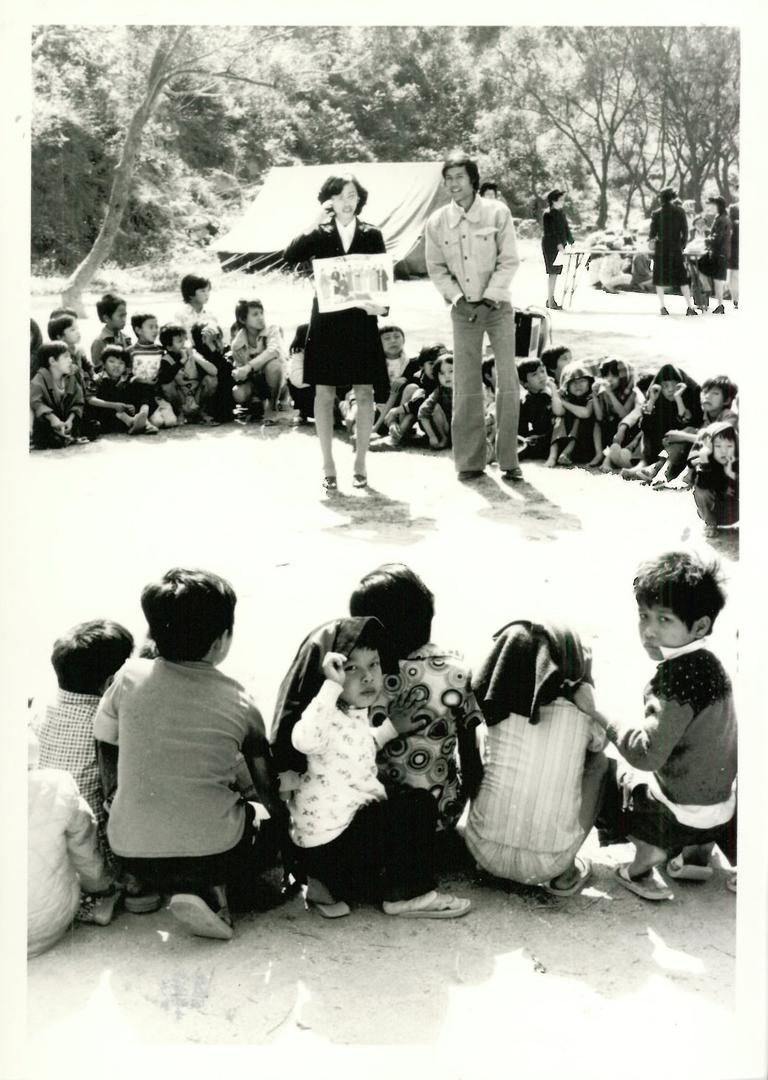
In receiving countries The Salvation Army continues to support newly arrived refugees by providing donations of needed goods (such as clothing), assistance to find employment and counselling in ‘social and spiritual needs.’
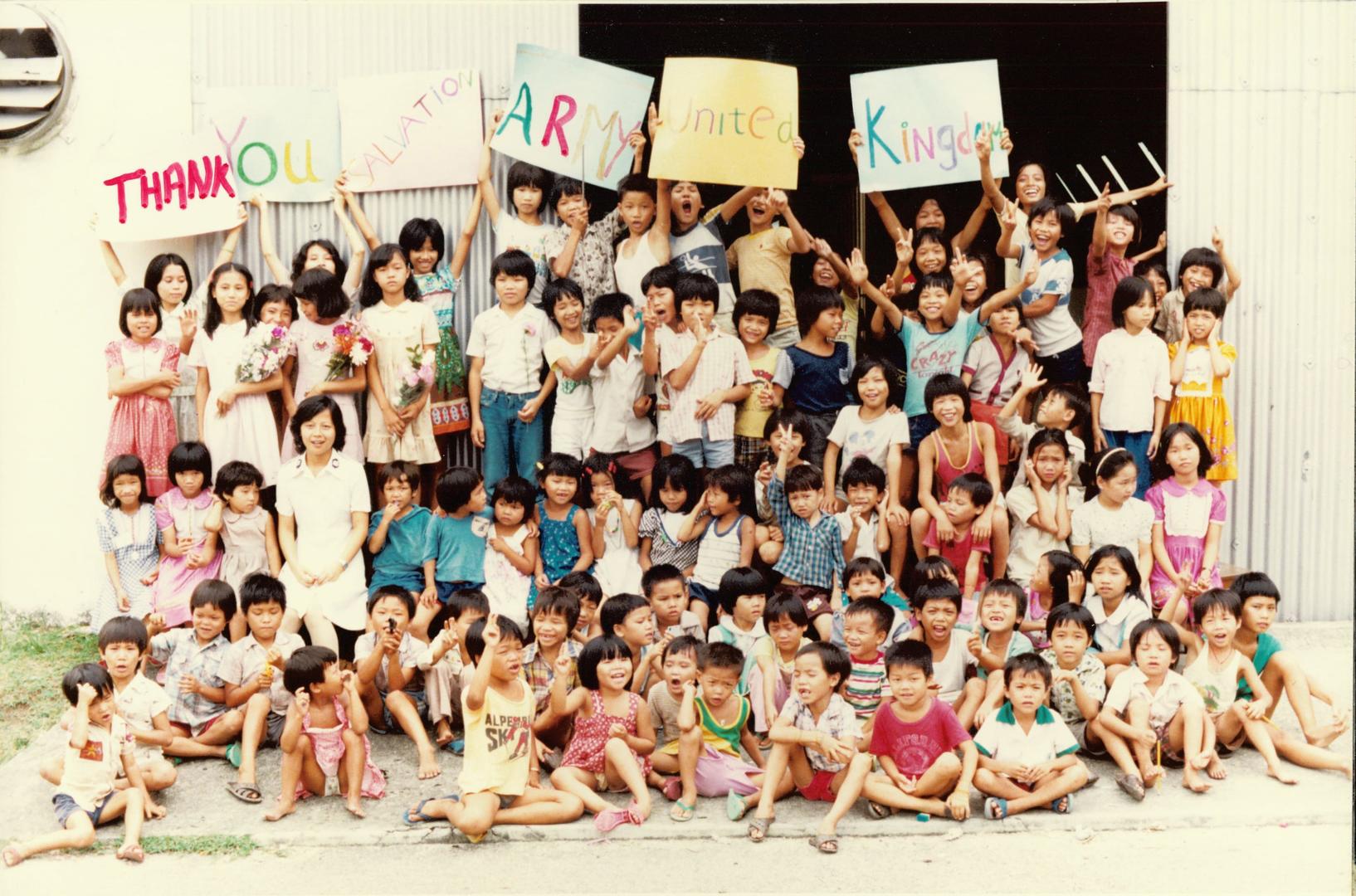
Hari
June 2014
Read other blogs from the Heritage Centre
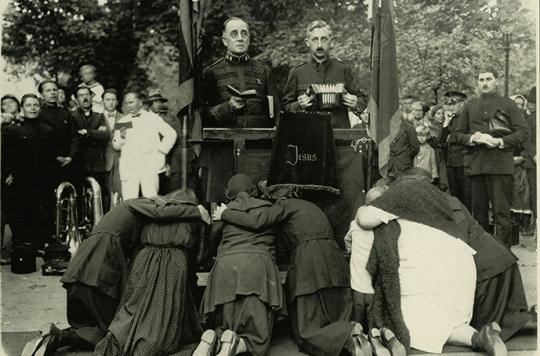
'Chilly political winds': The Salvation Army in Hungary
Salvation Army work in Hungary lasted scarcely 25 years, years which coincided with a politically turbulent period in the country's history ...
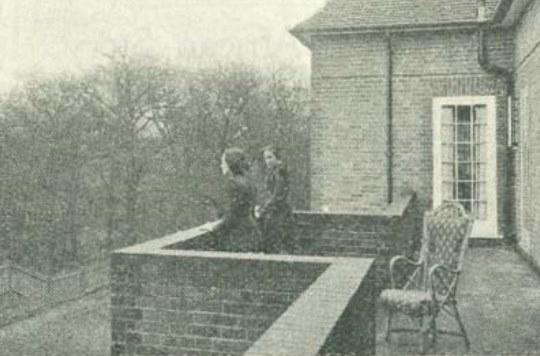
Emma Cottage
Recent cataloguing has brought to light an intriguing volume from our Women's Social Work archive from a home called 'Emma Cottage' which is described as a 'Home for Day Girls' ...
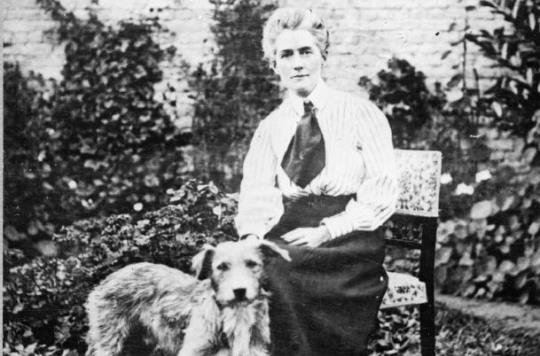
'Patriotism is not enough'
The International Heritage Centre holds a large collection of records produced by the Women's Social Work branch of The Salvation Army. In April 1914 a referral is noted from a Miss Edith Cavell of Brussels ...
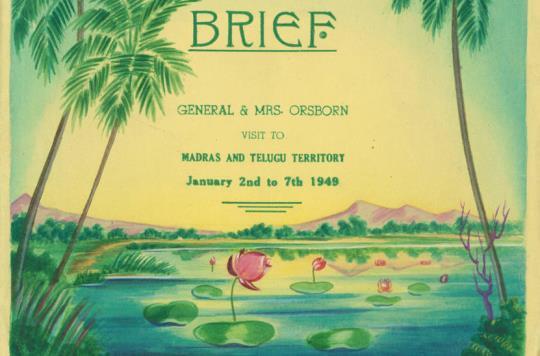
'Our Foreign Field': India
One of the strengths of the International Heritage Centre's holdings is its collections of records and published material relating to Salvation Army work in India ...